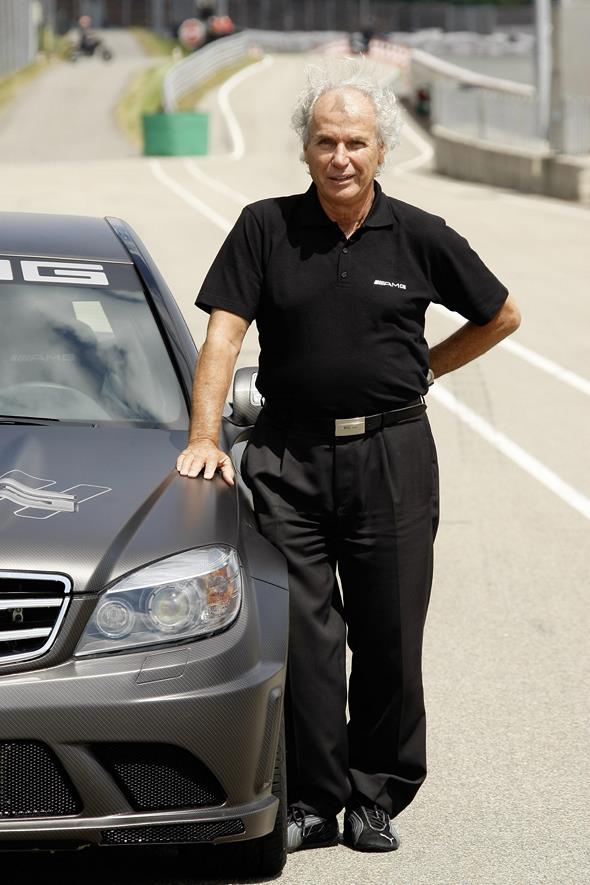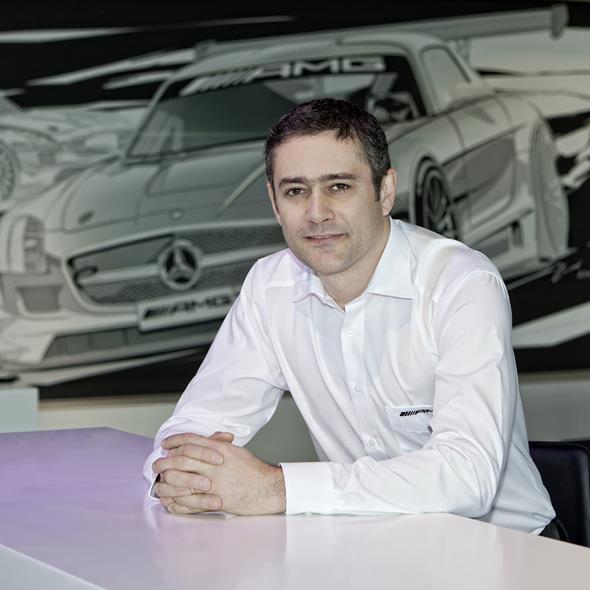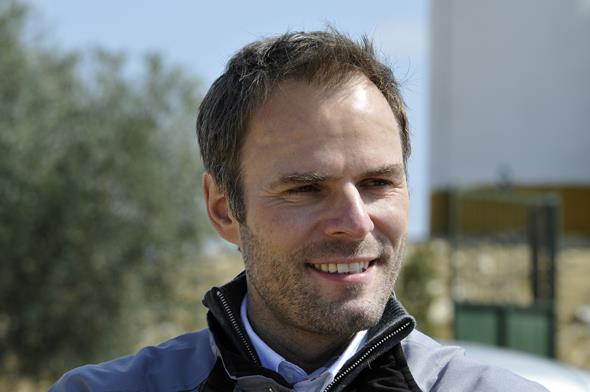
- Prominent racing legends: Dieter Glemser, Klaus Ludwig, Marcel Tiemann, and Karl Wendlinger
- 535 winding kilometres through Tyrol and Vorarlberg
Stuttgart/Lech – Mercedes-Benz Classic has five original vehicles taking part in this year’s Arlberg Classic Car Rally (27 to 29 June 2013), including the powerful AMG 300 SEL 6.8 representing Mercedes-AMG, Mercedes-Benz’s performance brand. A total of 110 teams have registered for the classic-car event.
Following hot on the heels of the world premiere of the new S-Class (model series 222), Mercedes-Benz Classic is sending two historic flagship models from the long S-Class tradition to the Arlberg Classic Car Rally: the 300 SEL 6.3 (W 109) and 450 SEL 6.9 (model series 116).
Both cars are synonymous with luxury, comfort and safety in automotive engineering. A further model, the AMG 300 SEL 6.8 (W 109), brings to the fore an altogether different facet of the exclusive model-series family: its spectacular motor sport history.
This vehicle is likewise an illustrious representative of the AMG brand’s history. The red-painted touring car celebrated its greatest triumph in the 24-hour race at Spa-Francorchamps in 1971. The legendary Mercedes-Benz 300 SLS (W 198) and 230 SL (W 113) roadsters add a further touch of glamour to the line-up of prominent cars at the Arlberg Classic 2013.
The team of mechanics from Mercedes-Benz Classic will also have suitably sporty modes of conveyance at their disposal at this year’s Arlberg Classic Car Rally: Mercedes-AMG is providing the experts with high-performance service vehicles.
Mercedes-Benz and the holiday region of Lech Zürs have been linked in partnership for many years: the brand with the star is involved in high-calibre sporting events, conferences and leisure activities in this region all year round.
As in previous years, Mercedes-Benz is the main sponsor for what is the fourth Arlberg Classic Car Rally. Lech offers ideal conditions for an eventful regularity rally featuring such a wealth of automotive treasures: there are more than ten Alpine passes within a radius of around 100 kilometres, and some 535 winding kilometres between the start and finish point in the town, taking in the impressive Alpine world of Tyrol and Vorarlberg over a period of three days.
Following the traditional prologue through the “Lech Canyon” on Thursday (27 June 2013), the event moves onwards and upwards to the Hahntennjoch Pass at an altitude of 1894 metres on Friday and then in a large loop back to Lech passing through Pitztal, Ötztal, and Berwangertal. Awaiting the participants on Saturday is the Flexen Pass, with an extraordinary gallery that clings to the rocks like a swallow’s nest.
It was here that the first Arlberg race was staged back in 1927. Wilhelm Max, Prince of Schaumburg-Lippe (nicknamed “Prince Tearing off”) won the sub-8-litre sports-car category driving a Mercedes-Benz Type S with start number 35.
The Mercedes-Benz Classic vehicles at the Arlberg Classic Car Rally 2013
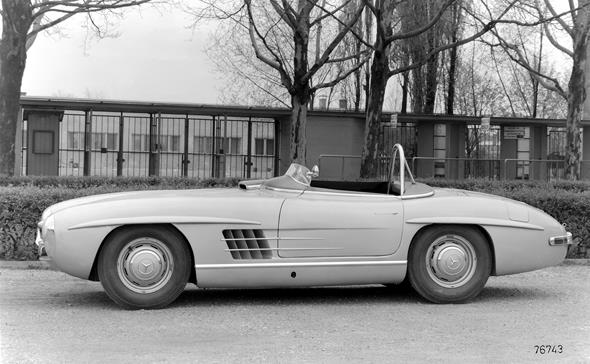
Mercedes-Benz 300 SLS (W 198), 1957
In 1957, Mercedes-Benz developed the 300 SLS, a special version of the 300 SL Roadster (W 198), for America’s National Sports Car Championship.
Two models of the sports car were built for races in the US as the Sports Car Club of America refused to authorise use of the regular production version in the “Standard Production” category for the 1957 season. Mercedes-Benz therefore transformed the production roadster into a competition vehicle for the Class D category.
The 300 SLS that was developed weighed just 970 kilograms (series-production version: 1,330 kilograms) while the engine output of 235 hp (173 kW) represented an increase of 20 hp (15 kW) compared with the roadster.
Externally, the 300 SLS was distinguishable by the absence of bumpers, its specially shaped cockpit cover with air intake slot, the low racing windscreen, and the roll-over bar behind the driver’s seat.
Paul O’Shea drove the 300 SLS to a comfortable victory in Class D of America’s National Sports Car Championship.

Mercedes-Benz 230 SL (W 113), 1965
Unveiled at the Geneva Motor Show in March 1963, the 230 SL (W 113) fused the concepts of its two predecessors, the 190 SL and the 300 SL, striking a balance between the sporty tuning of a classic roadster yet still featuring all the convenience of a comfortable, two-seater touring car offering high performance and advanced features for optimum driving safety.
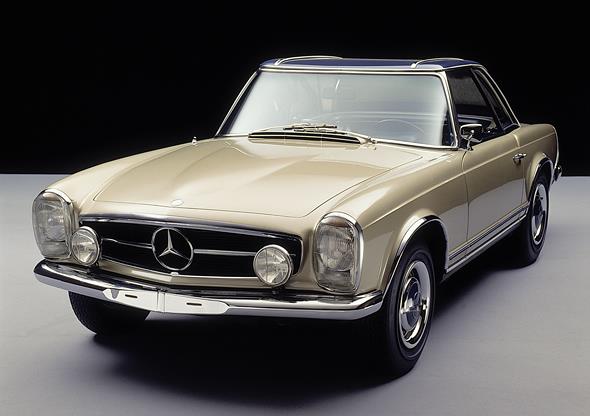
The 230 SL was available from the summer of 1963 in three versions: an open-top roadster with a folding soft top that could be operated with the greatest of ease – that in itself was a minor sensation; an open-top version with hard top, and finally a hard-top coupé. All three versions could be driven with the top open. The 2.3-litre six-cylinder engine generated 150 hp (110 kW) at 5,500 rpm and peak torque of 196 newton metres at 4,200 rpm.
The exterior of the 230 SL was characterised by clean, straight lines and the unmistakable SL face complete with a large, centrally positioned Mercedes star. The bonnet had a slight additional bulge in the middle to provide space for the vertically installed six-cylinder engine.
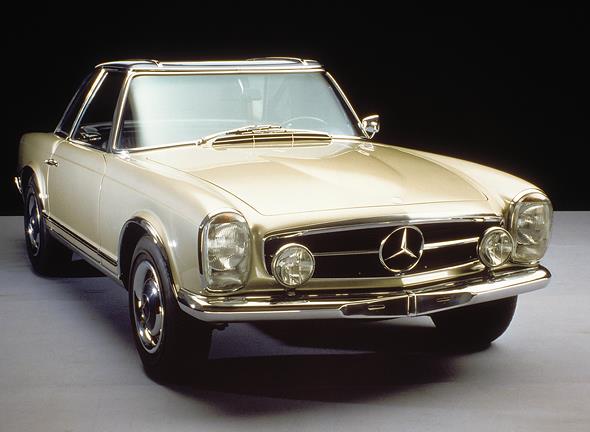
With its lines sloping gently inwards, the hard top was reminiscent of an oriental temple, earning the car its nickname “Pagoda” even before it had become a familiar sight on the streets.
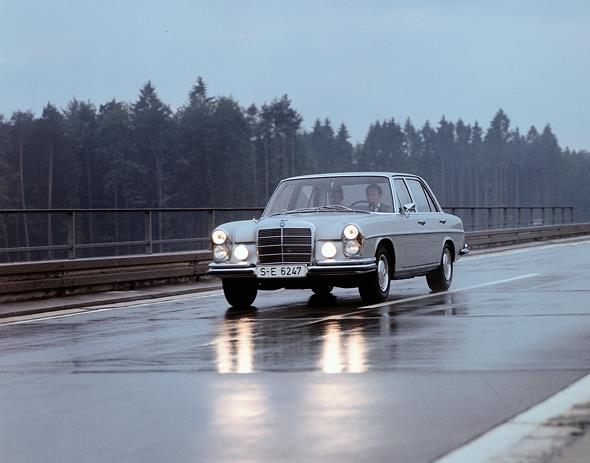
Mercedes-Benz 300 SEL 6.3 (W 109), 1968
In 1965, a new premium-class model generation (W 108/109) was unveiled as the successor to the “Tailfin” models (W 111/112). March 1968 saw the introduction of the top-of-the-range model 300 SEL 6.3, featuring the V8 engine and automatic transmission of the Mercedes-Benz 600 and hence with the performance potential of a top-class sports car.
Its appearance at the Geneva Motor Show caused a sensation, especially as there had been no announcements made prior to the event. The 300 SEL 6.3 model’s only distinguishing external features were its wider tyres, double halogen headlamps, and an additional set of high-beam lamps.
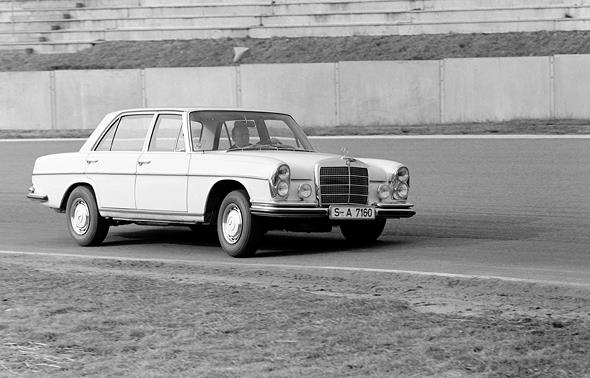
The engine delivered 250 hp (184 kW), but of greater significance perhaps was its mighty torque of 500 newton metres, which took the Saloon from 0 to 100 km/h in 8 seconds and gave the car a top speed of 221 km/h.
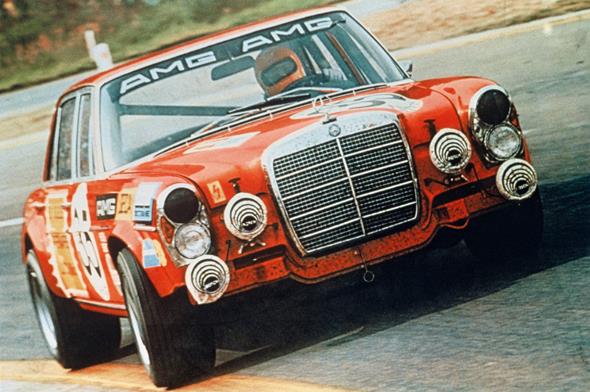
AMG 300 SEL 6.8 (W 109), 1971
At the wheel of the AMG 300 SEL 6.8 touring race car, Hans Heyer and Clemens Schickentanz won a surprising class victory and second place in the overall classification at the 24-hour race at Spa, Belgium, on 24 July 1971.
The winning car was developed by the then virtually unknown AMG, founded in 1967 by Hans Werner Aufrecht and Erhard Melcher, Großaspach, under the name “Ingenieursbüro, Konstruktion und Versuch zur Entwicklung von Rennmotoren” (Engineering office, construction and testing for the development of racing engines).
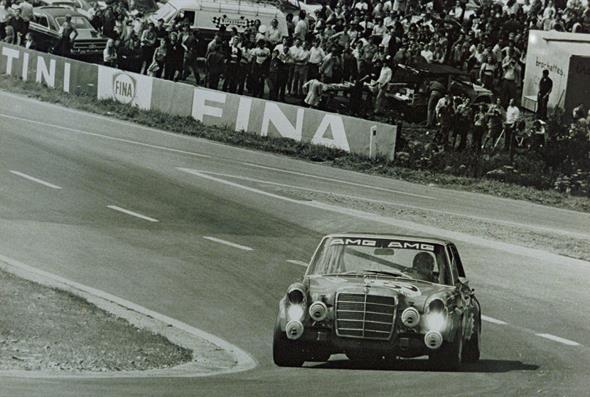
The modified vehicle was based on the Mercedes-Benz 300 SEL 6.3. With an output of 250 hp (184 kW), the car was absolutely unrivalled in its time. But Aufrecht and Melcher made the fastest German series-production car of the period even more powerful: engine capacity grew from 6330 cc to 6835 cc and the output of the improved V8 engine increased to 428 hp (315 kW).
The win in the Spa race marked the breakthrough for AMG and was to be followed by further victories. To this day the car is still known by its nickname “Red Sow”. The original car from 1971 no longer exists, but in 2006 the AMG 300 SEL 6.8 was re-developed in a detailed reconstruction.
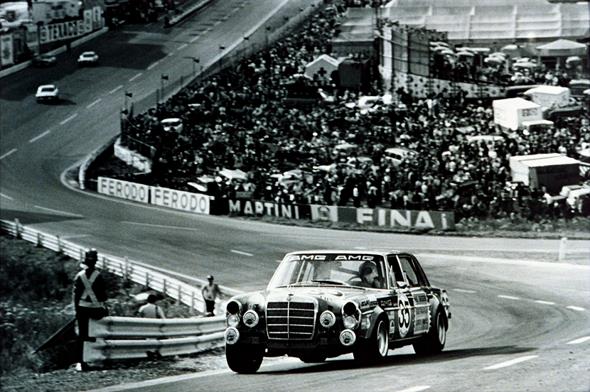
It has been an immensely potent ambassador of Mercedes-AMG history on each of its appearances ever since.
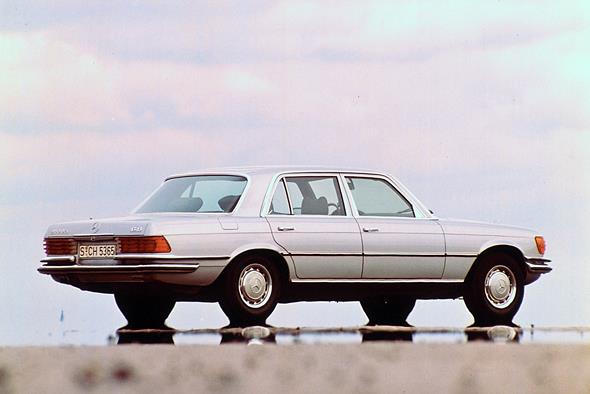
Mercedes-Benz 450 SEL 6.9 (model series 116), 1975
In October 1972, Mercedes-Benz premiered not only a new generation of its premium-class vehicle (model series 116) at the Paris Motor Show, but also the brand established a new name: the “Mercedes-Benz S-Class”. The “S” abbreviation for top-of-the-line Mercedes-Benz models had been in use since 1949. But now the “S” became the exclusive badge for an entire family of cars.
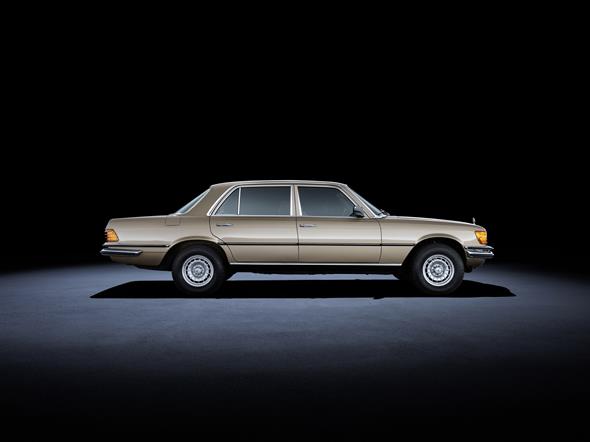
In May 1975, Mercedes-Benz unveiled the 450 SEL 6.9 – the new top-of-the-line model in model series 116 and a true successor to its spectacular 300 SEL 6.3 (W 109) high-performance saloon.
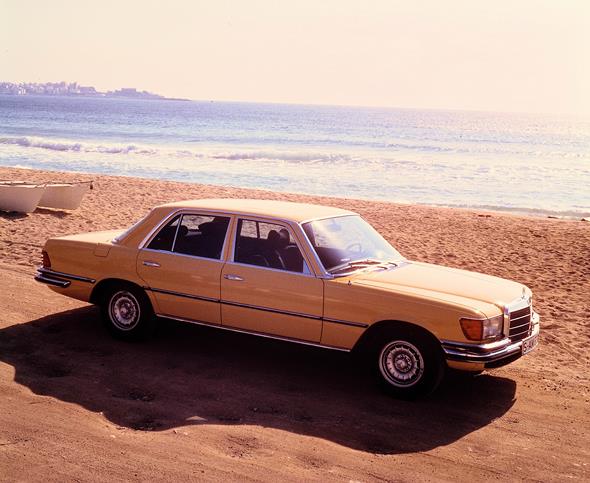
The powerful 6.9-litre V8 engine, developed from the highly successful 6.3-litre unit of its predecessor, achieved an output of 286 hp (210 kW) and maximum torque of 549 newton metres. The self-levelling hydropneumatic suspension – featured for the first time in a Mercedes-Benz passenger car – guaranteed the utmost in ride comfort.
Other features included in the standard specification for this top-of-the-range model were the central locking system, air conditioning, and headlamp cleaning system.
The drivers for Mercedes-Benz Classic at the Arlberg Classic Car Rally 2013
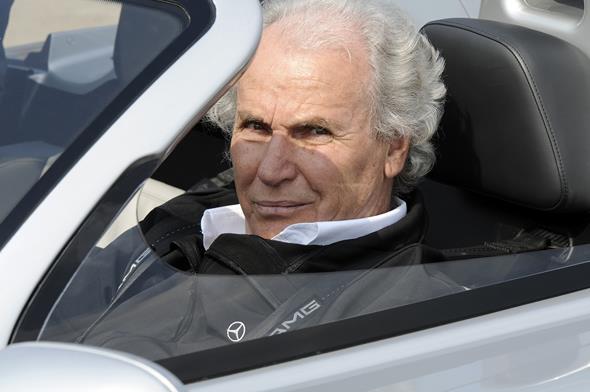
Dieter Glemser
Born: 28 June 1938 in Kirchheim/Teck, Germany
Dieter Glemser’s career in the fast lane began with the Schorndorf Hill Climb race in 1960. Many class victories followed in various mountain and circuit races on the Nürburgring. Glemser began racing for Daimler-Benz AG in 1963, winning overall in a Mercedes 220 SE at the Poland Rally and taking second place in both the Germany Rally (including a class win) and the Argentinian Touring Car Grand Prix.
In the following year, too, Glemser participated in the triple victory of the Böhringer/Kaiser, Glemser/Braungart, and Rosqvist/Falk teams in the Argentinian Touring Car Grand Prix. Glemser celebrated victory once again in 1971 with a European Championship title for Ford in the Touring Car Championship and a win at the 24-hour Spa-Francorchamps event.
He also held the title of German Motor Sport Champion in 1973 and 1974. However, following a severe accident caused by tyre damage at the Macau Touring Car Race, Southeast China, in November 1974, he decided to end his active motor sport career.
For ten years from 1990, Dieter Glemser was a member of the Mercedes-Benz Motorsport team, and as head of department, he was in charge of organisational matters. From 2001 to 2008, he worked on a freelance basis for Mercedes-AMG and Daimler AG for sport and driver safety training as well as at Classic events. He continues to drive at Mercedes-Benz Classic events to this day.
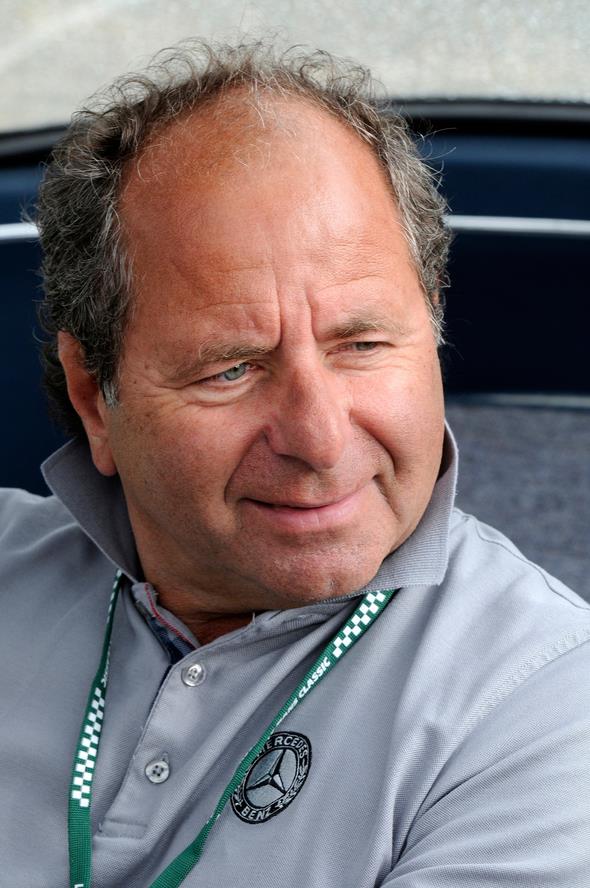
Klaus Ludwig
Born: 5 October 1949 in Bonn, Germany
Known to his fans as “King Ludwig”, Klaus Ludwig won the DTM championship three times. His career in motor sport started at the beginning of the 1970s with slalom racing, orientation racing, and touring car racing.
Among his first great successes were the titles won in the German Motor Racing Championships (DRM) in 1979 and 1981 as well as victories in the 24 Hours at Le Mans in 1979, 1984 and 1985. Ludwig came to the German Touring Championship (DTM) in 1985 where he originally started as a works driver for Ford, winning his first title in 1988. In 1989, he switched to the AMG-Mercedes team and in the following years up until 1994 he won two championship titles (1992 and 1994, runner-up in 1991) and a total of 19 races.
In 1995 and 1996, he drove in the International Touring Car Championships (ITC) for Opel’s Team Rosberg. Afterwards, he returned to AMG-Mercedes and won the driver and team trophy at the International FIA GT Championships in 1998 together with Ricardo Zonta.
Officially, he finished his career as a racing driver after this success, but in 2000, Ludwig returned for the start of the new German Touring Masters (DTM), finishing both the season and his racing driver career by coming in third in the overall placings driving a Mercedes-Benz CLK.
Marcel Tiemann
Born: 19 March 1974 in Hamburg
In comparison to other racing drivers, Marcel Tiemann from Hamburg turned to motor sport at a late stage but still managed to quickly work his way to the top following his early successes. In 1997, Mercedes-Benz signed up the promising young driver for the FIA GT Championship as the driver of the AMG-Mercedes CLK-GTR. Tiemann finished his first season in fourth place in the driver rankings, scoring the same amount of points as Alessandro Nannini.
In 1998, he again started the FIA GT Championship season for Mercedes-Benz. When the German Touring Car Masters (DTM) returned in 2000, Tiemann was one of the drivers of the Mercedes-Benz CLK-DTM.
From 2001 onwards, he was active with a number of racing teams. His five victories at the 24-hour Nürburgring races are legendary: in 2003 for Opel and then from 2006 through 2009 four times in succession for Porsche.
In May 2010, through no fault of his own, Tiemann was involved in an accident in his Audi at the GT Open in Imola, after which he was forced to end his racing career. He is amongst the most successful long-distance drivers of his time: in at least every third race in which he drove in his early career, Tiemann could be seen on the podium, and in two-thirds of his races he was amongst the top five drivers. Marcel Tiemann has worked as a brand ambassador for Mercedes-Benz Classic since 2012.
Karl Wendlinger
Born: 20 December 1968 in Kufstein, Austria
Karl Wendlinger was fourteen when he entered the world of motor sports through kart racing. He went on to win the German Formula 3 Championship in 1989. From 1990 to 1991, the Austrian was part of the Mercedes Junior Team that also included Michael Schumacher and Heinz-Harald Frentzen. As part of this team, he took part in the World Sports Car Championship. In 1991, he made the move to Formula 1.
From 1994 onwards, Wendlinger drove for the Sauber-Mercedes team together with Heinz-Harald Frentzen. He took part in the DTM German Touring Car Championship, International Formula 3000, and the 24 Hours at Le Mans.
Some of his key victories on the circuit include the FIA GT Championship (1999), first place in the 24 Hours at Le Mans in the GTS class (the same year), overall victory at the 24 Hours at Daytona in 2000, and second place in the 24 Hours at the Nürburgring (2003). From 2004 to 2011, Karl Wendlinger started for various teams in the FIA GT Championship; in 2007 he was runner-up with Jetalliance Racing. Karl Wendlinger has been an AMG brand ambassador and an instructor at the AMG Driving Academy since 2012.

